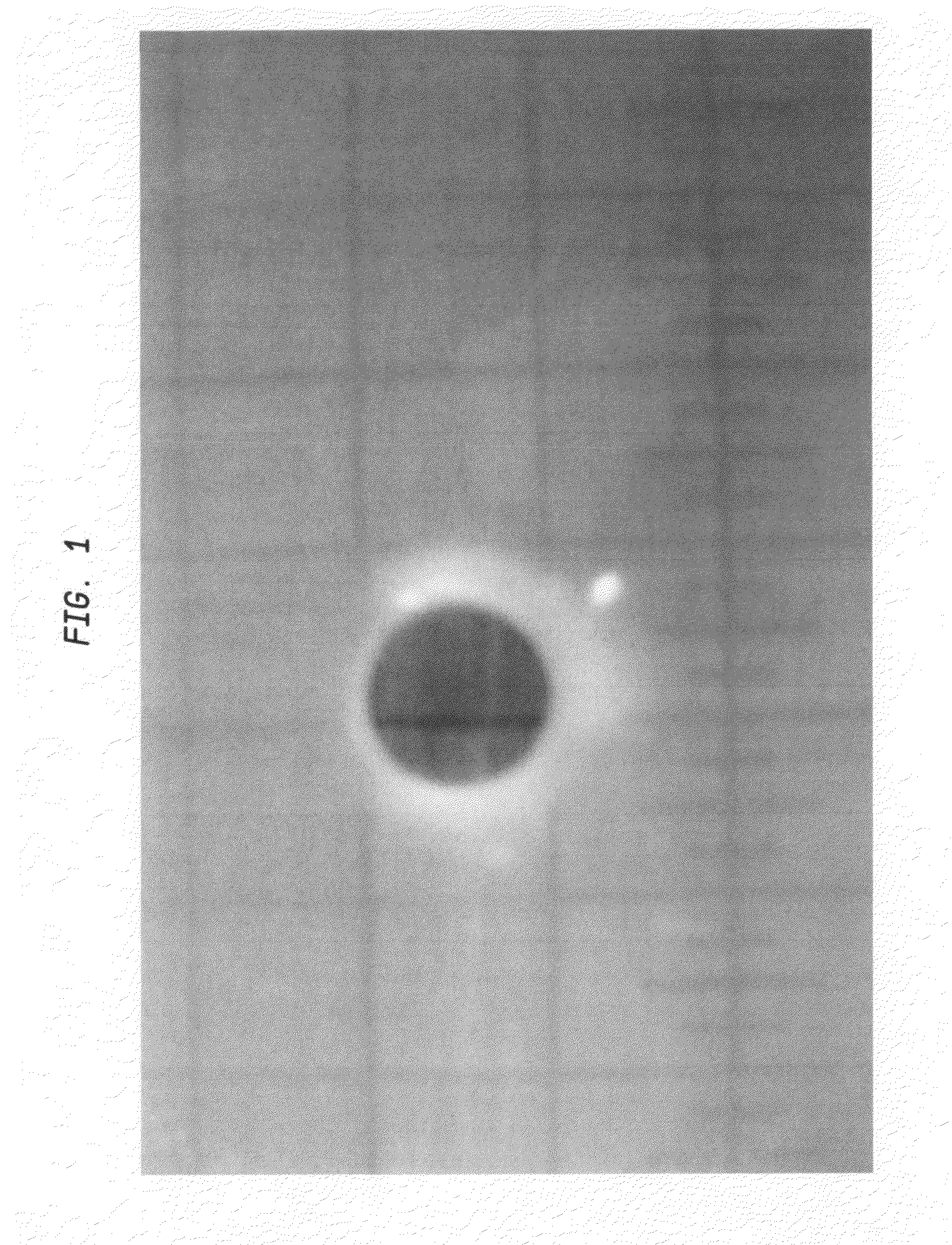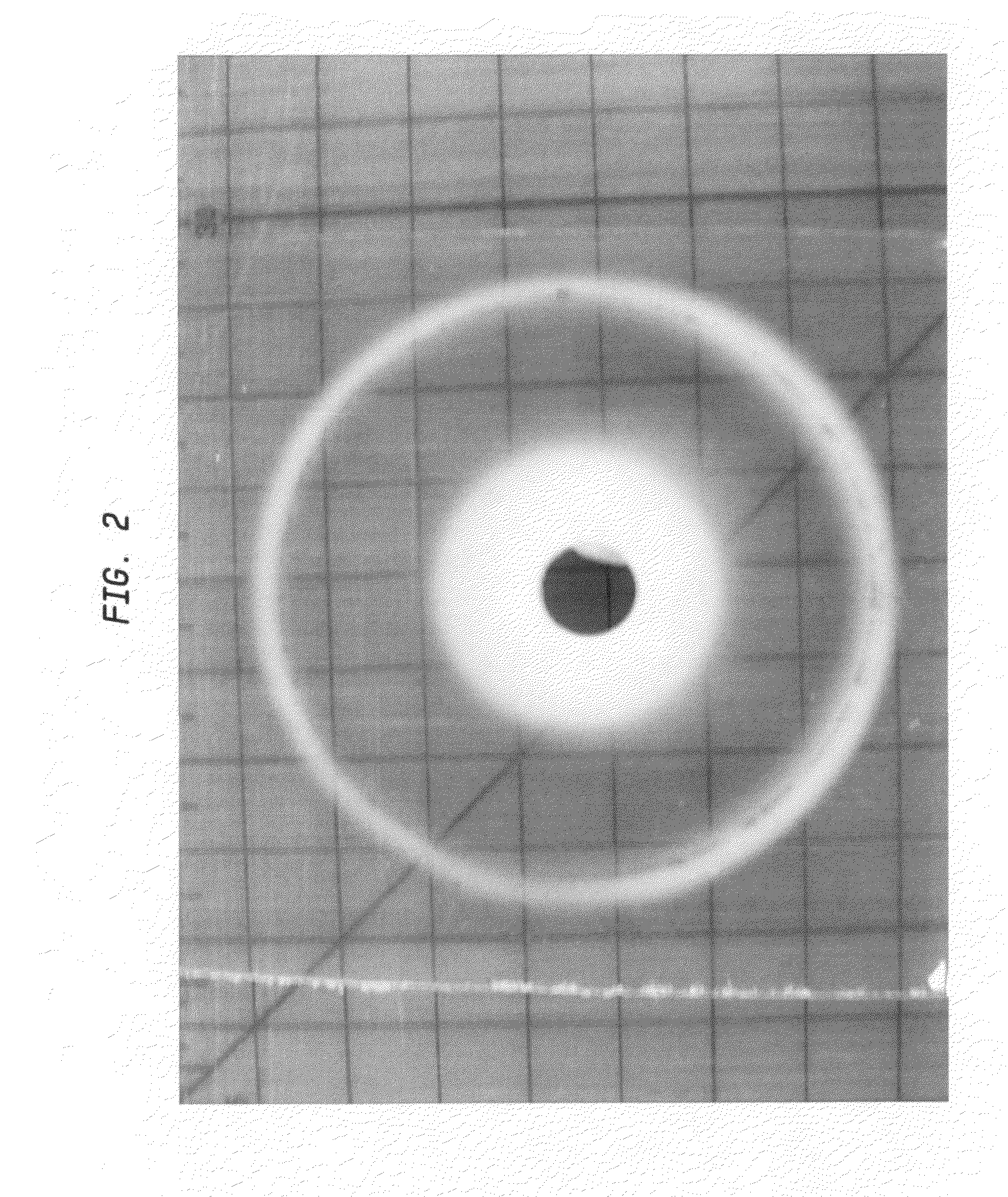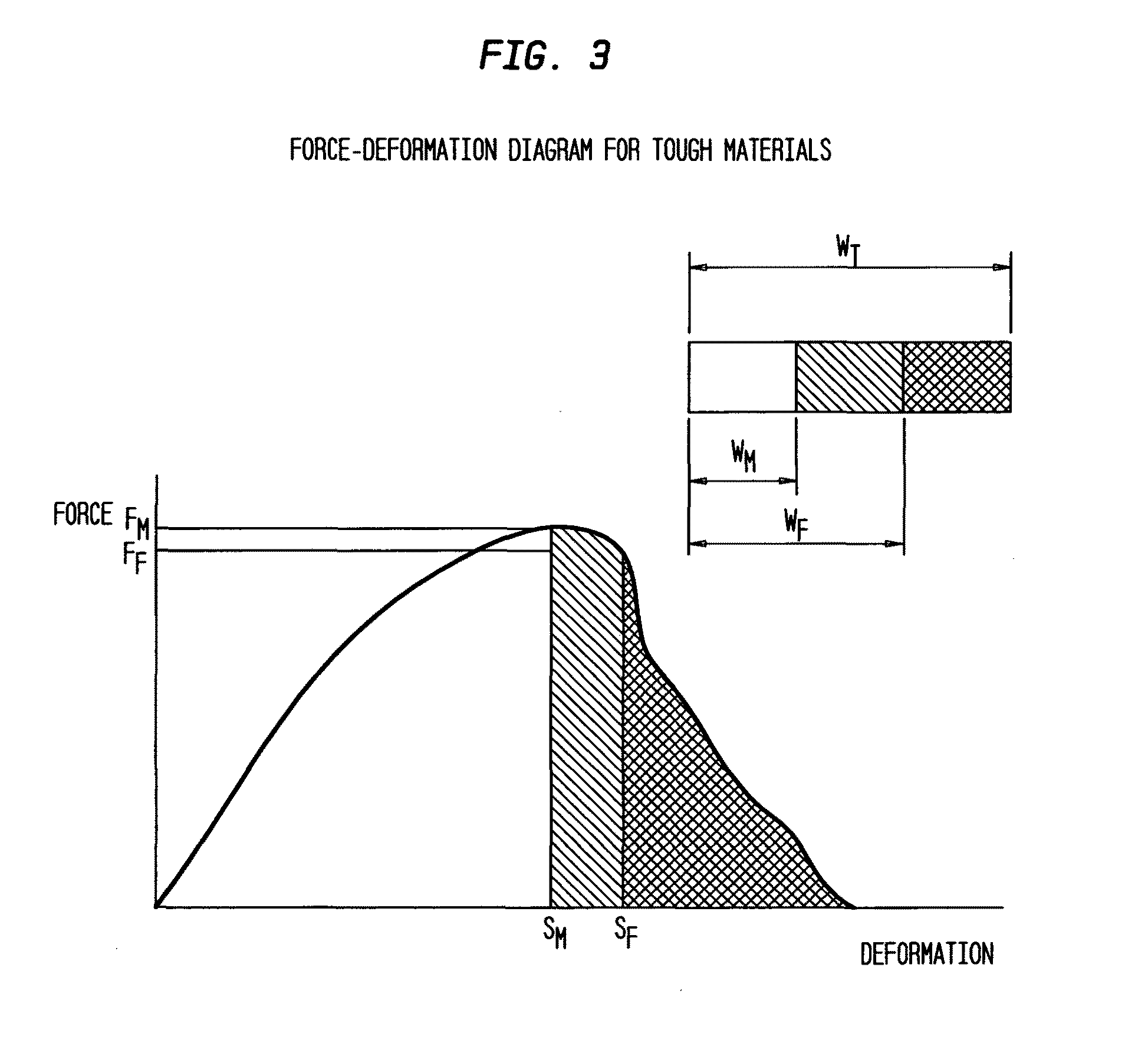Melt blends of amorphous cycloolefin polymers and partially crystalline cycloolefin elastomers with improved toughness
a technology of cycloolefin and elastomers, which is applied in the direction of synthetic resin layered products, transportation and packaging, chemical instruments and processes, etc., can solve the problems of limited material adoption, lack of mechanical durability or toughness, and difficult chemical purity, etc., to improve the composition of polymers, improve the toughness, and improve the effect of chemical purity
- Summary
- Abstract
- Description
- Claims
- Application Information
AI Technical Summary
Benefits of technology
Problems solved by technology
Method used
Image
Examples
embodiment
[0219]Embodiment No. 42 is the melt-blend resin composition No. 1, wherein the melt-blend resin composition is extruded into a film or sheet.
[0220]Embodiment No. 43 is the film or sheet according to Embodiment No. 42, wherein the film or sheet exhibits a Relative High Speed Impact Strength of at least 1.5 and up to 100.
[0221]Embodiment No. 44 is the film or sheet melt-blend resin composition according to Embodiment No. 42, wherein the film or sheet exhibits a Relative High Speed Impact Strength of at least 2.
[0222]Embodiment No. 45 is the film or sheet melt-blend resin composition according to Embodiment No. 42, wherein the film or sheet exhibits a Relative High Speed Impact Strength of at least 2.5.
[0223]Embodiment No. 46 is the film or sheet melt-blend resin composition according to Embodiment No. 42, wherein the film or sheet exhibits a Relative High Speed Impact Strength of at least 3.
[0224]Embodiment No. 47 is the film or sheet melt-blend resin composition according to Embodim...
PUM
| Property | Measurement | Unit |
|---|---|---|
| Tg | aaaaa | aaaaa |
| crystalline melting temperature | aaaaa | aaaaa |
| crystalline melting temperature | aaaaa | aaaaa |
Abstract
Description
Claims
Application Information
 Login to View More
Login to View More - R&D
- Intellectual Property
- Life Sciences
- Materials
- Tech Scout
- Unparalleled Data Quality
- Higher Quality Content
- 60% Fewer Hallucinations
Browse by: Latest US Patents, China's latest patents, Technical Efficacy Thesaurus, Application Domain, Technology Topic, Popular Technical Reports.
© 2025 PatSnap. All rights reserved.Legal|Privacy policy|Modern Slavery Act Transparency Statement|Sitemap|About US| Contact US: help@patsnap.com



